Even before I got my first Hydrogen Thyratron, I was already anxious to see the pink/purple glow the ionized hydrogen produces. A few weeks later, I got a nice TGI2 400/16 Russian Thyratron ( https://www.pocketmagic.net/?p=2247 ) so I started one of my longest projects with High Voltage.
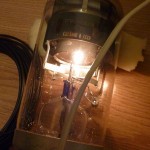 |
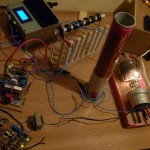 |
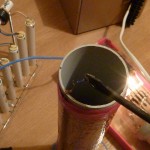 |
 |
As you know a thyratron tube can work as a switch. It’s a gas filled triode, with a filament, an anode plate and a grid. Gases like xenon, hydrogen or even mercury vapors are all used in various applications. The grid works like a turn on switch, and starts the ionization inside the thyratron. The tube will remain on, if the plate voltage is kept over a given threshold, so unlike a transistor, the thyratron will not turn off, even if the grid is voltage is removed. To turn the thyratron off, the anode voltage must drop close to zero. Then the ionized gas inside needs to revert to the neutral state in a process that is called “recovery”, and the time needed to complete this process is called “recovery time”. As you can see a thyratron works similar to a thyristor, but the similarities end here:
Unlike its silicon relatives, a thyratron like the one I got, the TGI2 400/16, can handle pulses of 16KV 400A, impressive numbers to say the least. Currently, hydrogen thyratrons are hard to get, and are usually expensive. For the purpose of this project, hydrogen or even deuterium Thyratrons work best, as the tubes that use these gases have a very quick recovery, unlike mercury vapor thyratrons. So when trying to build a Thyratron switched tesla coil, it has to be a hydrogen thyratron at least.
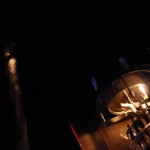 |
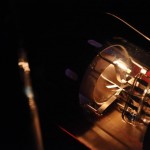 |
 |
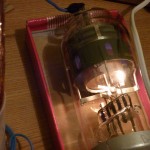 |
Even so, my hydrogen TGI2 400/16, only allows frequencies of up to 450Hz, very little for getting any air transformer to resonate. As my good friend Vasil indicated, it would be wise to use the setup to drive a pulse transformer instead (using ferromagnetic core).
But since many of you wondered of how a Thyratron Switched Tesla coil would look like, I decided to run a test using an Air transformer, and here are the results. Building a device like this requires achieving a few steps:
1) A filament transformer (both for main filament and for the hydrogen reservoir), for the TGI2 400/16 that means 6.3V at 10Amps. I used a rewound mot transformer, see it here:
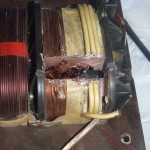
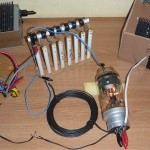
2) A high voltage supply, delivering 8KV, that is actually a flyback inverter using a Royer oscillator.
3) A Pulse Forming Network, type E:
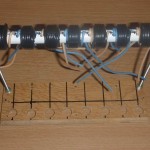
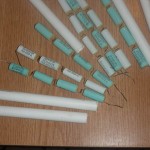
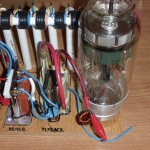
Here’s a video with a PFN test:
4) The TGI2 400/16:
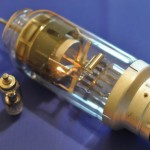
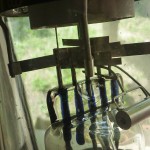
5) Pulse generator for grid control, this is actually a variable pulse duration, frequency and amplitude, PCB design and schematics here:
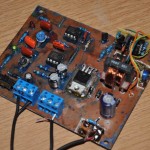
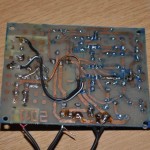
A video with a pulse generator test, using the neon tube 313CD from Western Electric:
6) An air core transformer with a tesla coil secondary and a few turns of primary, that I had ready from a different project
This device is in fact a relaxation oscillator. I’ve prepared a long article in this dedicated topic.
In just a few words, the pulse generator provides bursts of 200V on the thyratron grid, that turn the tube on. The capacitors in the pulse forming network discharge via the thyratron in the load. Because of the inductive properties of the PFN, the positive discharge voltage has a tendency to swing negative, turning the thyratron off and ready for the next discharge. The PFN discharge and the Thyratron deionization times give the total recovery time.
Here is a video showing the working Thyratron tube in one of the first tests:
Since I’m among the first to build a device like this, I believe it would be nice to have the privilege to name the abbreviation for the Thyratron Switched Tesla coil, a “THYTC” device.
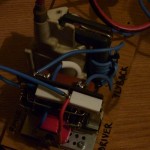 |
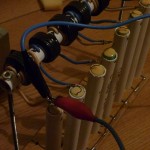 |
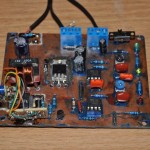 |
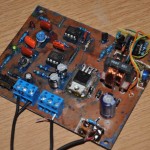 |
Updates to follow soon.

Very nice, would like to contact you on fb.
Need pcb also. (Timer for this app)
Chris
Thyratron mean open door and serves to eliminate energy losses and allows for maximum energy efficiency.
Excellent article. congratulations